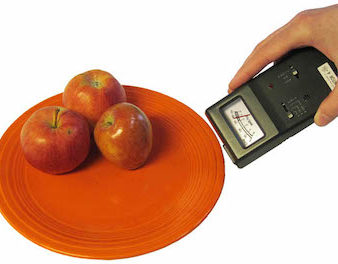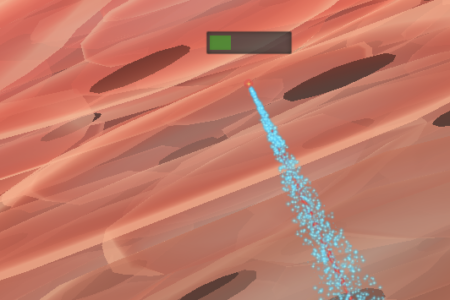Cycle 1: Radiation Basics Full version Student version
Cycle1 introduces classroom geiger counters, background radiation, radioactive sources, distinguishing ionizing from electromagnetic radiation, waves vs. particles. Students test for contamination and they identify alpha, beta, and gamma radiation via shielding experiments. Most students begin with very vague and dysfunctional ideas about radiation – very few if any think of radiation as high speed subatomic particles. At the end of Cycle 1 your class will conclude that radiation is tiny high speed “particles” traveling sporadically from certain objects.
Cycle 2: Atoms as sources of radiation Full version Student version
Cycle 2 outlines the basic properties of atoms, starting with their relative size, then the roles of electrons and protons, ions, and the meaning of isotopes. This is done with a custom made “atom builder” app. Once students work out the difference between neutral atoms and ions they then can build and “test” atoms with unstable nuclei. These nuclei explode, and the class tentatively identifies the traveling fragments as radiation.
Students then identify alpha, beta, and gamma radiation, work out the processes by which each are ejected from atoms, and identify patterns in the various unstable nuclei – those with certain problems are going to undergo certain transformations, ejecting certain kinds of radiation. This enables students to predict whether and how an atom will explode, and what will be ejected.
Cycle 3: Interaction of radiation with matter, and health effects of radiation
Full version Student version
Cycle 3 introduces ionization by radiation using two more simulators. Then students are asked to tie together four different size scales to explain how radiation harms people. Students have to trace the manifestation of damage through particle scale, molecule scale, cell scale, and organism scale. Acute Radiation Sickness is explained as “too much chemical damage to cells” and cancer is introduced as a combination of two mutations in a single cell – these two mutations cause excessive cell division by cells that have no protective cell death mechanism.
Cycle 4: Nuclear power and nuclear waste – coming soon
Full version
Cycle 4 introduces nuclear fission and fission products. Then it introduces half-lives using both real data and a dice model. Students explain half lives as a behavior of an aggregate of atoms that have particular properties – most notably a constant probability-per-time (or toss of the dice) of exploding. Then students read about nuclear reactors and nuclear power, and consider the health effects of the famous fission products – 131Iodine, 90Strontium, and 137Cesium.
This cycle is not complete and hasn’t been tested recently.



